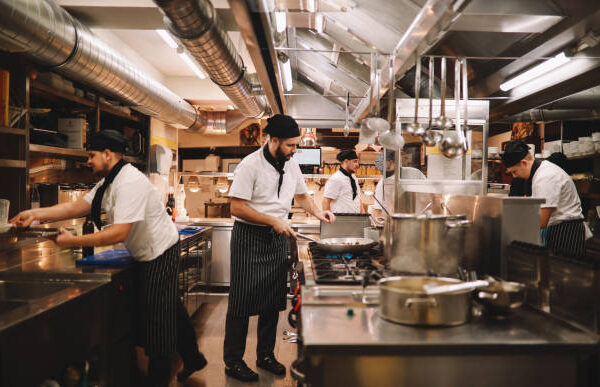When it comes to designing a restaurant, the colors you choose are not just about aesthetics—they play a pivotal role in conveying your restaurant’s brand identity. A restaurant’s visual appeal sets the stage for the entire dining experience, from the moment customers walk in to when they take that final bite. Colors have the power to evoke certain emotions, influence perceptions, and even affect appetite. Whether you’re renovating an existing space or starting from the ground up, choosing the right color palette for your restaurant is one of the most important decisions you’ll make.
The Psychology of Color
The psychology of color has been studied for years, and experts agree that different colors evoke distinct emotions. For example, red is often associated with energy, passion, and appetite stimulation—this is why you’ll find a lot of fast food chains and casual eateries incorporating red tones in their interiors. Blue, on the other hand, is seen as calming and tranquil, but it’s also a color that can suppress appetite, which is why it’s less common in restaurants designed to promote high turnover.
The key is to select a color palette that reflects your restaurant’s brand personality while also enhancing the dining experience. If you’re opening a fast-casual spot aimed at a younger audience, bold, energetic colors might be a great fit. On the other hand, a fine dining restaurant might opt for muted tones like deep blues, grays, and soft golds to evoke elegance and sophistication. Understanding the psychological effects of color will help you create an atmosphere that resonates with your target customers.
Creating an Emotional Connection with Your Customers
Your restaurant’s brand is built on more than just food and service—it’s an experience. The design elements, including the color scheme, set the tone for that experience. For instance, if your restaurant’s concept revolves around a modern, minimalist approach, opting for neutral colors like whites, grays, and blacks can help highlight the clean lines and contemporary atmosphere of the space. These colors make a subtle, sophisticated statement and allow the food to take center stage.
On the other hand, if you’re opening a family-friendly restaurant or a fun, casual spot, warm and inviting colors like yellows, oranges, and reds may work best. These colors tend to evoke feelings of warmth, comfort, and joy, which makes them perfect for spaces where customers are looking to relax and enjoy a meal with loved ones. By aligning your color choices with the emotions you want to evoke, you help create a strong emotional connection between your brand and your customers.
How to Choose the Right Colors for Your Brand
When it comes to selecting the right color palette for your restaurant, think of it as an extension of your brand’s personality. If you’re still in the early stages of developing your restaurant’s brand identity, color should be one of the first elements to consider. For example, a seafood restaurant may use shades of blue and aqua to invoke the feeling of being near the ocean, while an Italian restaurant could embrace earthy tones like terracotta and olive green to convey warmth and authenticity.
Start by identifying the core values of your restaurant. Is it fast and efficient or slow and luxurious? Is your cuisine fresh and health-focused or indulgent and comforting? Once you have a clear picture of your restaurant’s character, select colors that embody those traits. If your restaurant is focused on organic, farm-to-table dishes, earthy greens and browns might work well. For a more upscale steakhouse, rich tones like dark mahogany, gold, and deep red can create a luxurious, high-end feel.
Using Colors to Define Different Areas of the Restaurant
A restaurant is made up of various spaces, each of which serves a different purpose. The colors you choose should reflect the mood and function of each area. For example, the dining room should have a color palette that encourages relaxation and conversation. If you’re designing an open kitchen or bar area, consider using warmer tones like red or orange to create an energetic atmosphere that keeps the vibe lively and social.
One effective way to use color is by dividing the space into zones. For instance, if your restaurant has a private dining area for special occasions, you might use richer, more intimate colors like deep burgundy or gold to create a sense of exclusivity and comfort. In contrast, a casual seating area might feature lighter, more neutral tones to keep the space open and airy. The key here is consistency—while it’s important to distinguish each area, the overall color palette should still feel cohesive across the restaurant.
Balancing Trendy Colors with Timeless Appeal
The restaurant design industry, like any other, experiences trends that come and go. While it’s tempting to follow the latest design fads, it’s important to create a space that can stand the test of time. This is especially true for color palettes, as trendy colors may lose their appeal after just a few years. If you’re working on a renovation or a new build, you want to choose colors that will remain relevant and attractive for years to come.
That doesn’t mean you can’t incorporate current trends—it just means you should do so thoughtfully. For example, if pastel colors are popular right now, you could use them as accent colors in areas like the bar, the walls, or the restroom, but choose more timeless tones for the main dining area. Neutral colors like whites, blacks, and grays never go out of style and can be paired with trendy hues to create a balanced and up-to-date look.
Incorporating elements of nature, like wood accents or green plants, is another way to bring a trendy touch to the design while ensuring that your restaurant remains timeless. These natural elements complement almost any color palette and create a welcoming, organic atmosphere that appeals to a broad audience.
The Role of Lighting in Enhancing Your Color Palette
It’s also essential to consider how lighting affects the colors in your restaurant. Lighting can transform the way colors appear and even change the mood of the space. Natural light brings out the true vibrancy of colors, while artificial light can alter the tones, making them appear warmer or cooler depending on the light source. When planning your color scheme, keep in mind the type of lighting you’ll use and how it will interact with the colors in your space.
Soft, warm lighting can make a space feel cozy and inviting, while cooler lighting creates a more modern, sleek vibe. Consider using adjustable lighting that can change throughout the day to enhance the mood in your restaurant. For example, you might use brighter lights during the day for a lively, energetic atmosphere and dimmer lights in the evening to create a more relaxed, intimate setting.
Color Palette and Branding Consistency
One of the most important elements of creating a cohesive brand identity is consistency. Your color palette should be reflected not only in your restaurant’s interior but also in your branding materials, such as menus, signage, uniforms, and even your online presence. This ensures that your brand is instantly recognizable, whether customers are dining in your restaurant, viewing your website, or browsing your social media pages.
When your restaurant’s color palette aligns with your branding, it creates a seamless experience for your customers. For example, if your restaurant’s brand revolves around a laid-back, beachy vibe, your color choices should reinforce that feeling. Blues and soft sands in the interior should complement the relaxed style of your logo, website, and marketing materials. Consistency across all platforms helps reinforce your brand’s story and strengthens the emotional connection you’ve built with your customers.
Bringing Your Brand to Life with Color
Choosing the right color palette for your restaurant is more than just a design choice—it’s a key component of your restaurant’s identity. Colors can shape customer perceptions, evoke emotions, and ultimately influence their dining experience. By carefully selecting colors that align with your brand’s personality, creating distinct areas with thoughtful palettes, and balancing trends with timeless appeal, you can design a restaurant that not only looks stunning but also reinforces your brand’s story.
When the right colors are paired with the perfect lighting, decor, and layout, they will work in harmony to create an inviting, cohesive space that customers will want to return to again and again. So, whether you’re opening a new restaurant or planning a renovation, take the time to thoughtfully consider your color choices. Your customers will notice—and they’ll appreciate the effort you’ve put into crafting an experience that’s as memorable as your menu.



